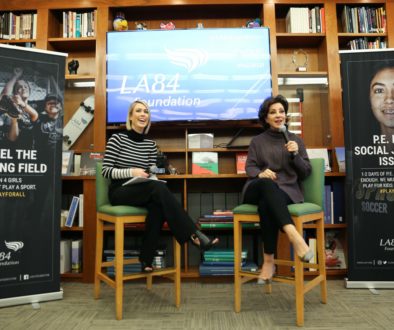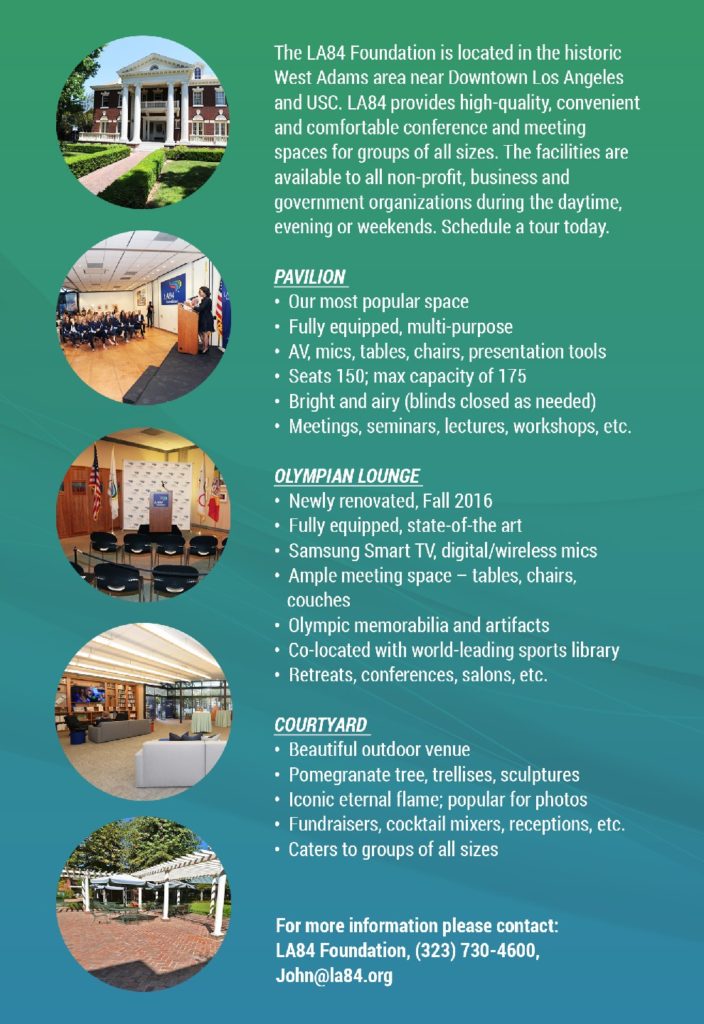SL Interview: Sheila Robertson Explores the Challenges for Female Coaches
Women in sports have made enormous strides, particularly on the field of play. Their athletic success, however, has not always translated to the coaching ranks. In high schools and colleges in the U.S., many men lead female teams while very few women coach boys’ and men’s teams. North of the border, according to the Coaching Association of Canada, there is an “overall lack of women coaching at the national team and Olympic levels.”
Among the statistics uncovered by the Association: at the 2004 Athens Olympic Games, “women accounted for 50% of Canada’s medals, 53% of Top-8 finishes, but only 10.5% of coaches accredited by the Canadian Olympic Committee.” At the 2006 Torino Olympic Games, “women accounted for 67% of Canada’s medals, but only 14.7% of Canada’s accredited coaches.”
Ottawa-based writer-editor Sheila Robertson has long taken an interest in women’s sports and coaching. She started working for Team Canada in 1976, when the Olympic Games were held in Montreal, in the communications department. She also took part in the 1980 Lake Placid Olympic Winter Games, acting as liaison between the media and the Canadian team, and she managed the Canada’s media office at the 1996 Atlanta Games.
Robertson, in 1994, became the founding editor of Coaches Report, in which she profiled numerous coaches, and has edited manuals on long-term athlete development. In 2000, Robertson was asked to edit a start-up publication called the Canadian Journal for Women in Coaching. In 2005, Coaches of Canada established the Sheila Robertson Award to recognize a national sports organization or multi-sport service organization “that demonstrates a consistent approach in valuing and recognizing the role of the coach within the organization, the media and the public.” Past award recipients include Athletics Canada, Skate Canada and the Canadian Yachting Association.
This year, with Canada acting as host of the 2010 Vancouver Olympic Winter Games, the editorial board of the Canadian Journal for Women in Coaching decided to celebrate the occasion by producing a greatest hits compilation of articles. The result is “Taking the Lead: Strategies and Solutions from Female Coaches” (University of Alberta Press; Amazon), a wide-ranging volume that examines multifarious issues, from juggling motherhood demands to dealing with harassment.
Practical as well as provocative, the book urges sports leaders and administrators to re-examine the unique challenges that female coaches face and to reimagine the sports landscape with improved opportunities for women coaches. (Two organizations – the Coaching Association of Canada and the Canadian Association for the Advancement of Women and Sport and Physical Activity – sponsored the publication of the book).
From Ottawa, Robertson spoke to SportsLetter by telephone.
-– David Davis
SportsLetter: How did you get interested in writing about coaching?
Sheila Robertson: The Canadian Professional Coaches Association called me and asked if I would begin a quarterly magazine for them. That was how it all began. I spent twelve years, up until about two or three years ago, as the editor and lead writer of Coaches Report [now called Coaches Plan]. In the middle of that time frame, the Coaching Association of Canada approached me and asked if I would become the editor of another magazine, called the Canadian Journal for Women in Coaching. It was the perfect match for me because of my connections to the coaching community at large and my interest in women in sports.
SL: Do you write about technique and coaching philosophy?
SR: I have some technical knowledge about coaching, but my strength has always been human-interest articles. I enjoy telling people’s stories.
SL: How did your work with the Canadian Journal for Women in Coaching come about?
SR: In 1986, the Coaching Association of Canada established a program within the organization called the Women in Coaching program. The director at the time, Cyndie Flett, had been a national coach in water polo, with a very strong interest in women in coaching. Her analysis led her to believe that a publication highlighting the problems of, the realities faced by, and, hopefully, offering solutions to women coaches in Canada would be a benefit. She asked me if I would be interested in editing the Journal. Well, I leapt at the opportunity because of my own personal interest and experiences as a woman in high-performance sport. I was well aware that there were problems facing women coaches, and so we put together the editorial board for the Journal. [Editor’s note: The “Canadian Journal for Women in Coaching” is an online-only publication: http://www.coach.ca/canadian-journal-for-women-in-coaching-s12541]
SL: What are some of the unique challenges that women coaches face in Canada?
SR: I know that these issues are not limited to Canada – they’re worldwide, judging from the responses that my colleagues and I receive about articles that appear in the Journal. It starts with a general perception that coaching sport at the higher levels is very difficult for women, that there are more barriers to participation.
From my own perspective, I think one of the bigger issues is motherhood: how do you combine your desire to coach at the very highest level with your desire to nurture and care for your children? The nature of the coaching profession is very demanding. You’re away from home up to 265 days a year. That’s very hard on a mother, on any parent.
Other issues include remuneration and respect. There’s a suspicion of women’s ability to coach, and the particular skills that women coaches bring beyond technical knowledge – like empathy and listening skills – are not necessarily recognized or understood. They’ve also had difficultly being taken seriously. Even in some traditional female sports, they haven’t fared that well.
SL: Do women lead differently than men?
SR: Yes, they do. We’re not a peer-review journal, but we’ve published several articles that confirm this. And, this issue is not unique to sport. It’s certainly true in business. There just seems to be resistance to the style of women’s leadership. It’s difficult for women to get beyond a certain level.
SL: How would you describe the leadership style of women and how it relates to coaching?
SR: It’s hard to generalize, but there’s general agreement that women are good communicators. They also bring skills of organization, often honed from being mothers. And, women are very interested in mentorship, both in being mentored and in mentoring others.
SL: Do women coaches communicate differently than their male counterparts?
SR: From my own observations, women coaches are really interested in knowing each player for who and what they are, what their skills are and what their needs are. They’re very concerned about the whole person. They care about the person as a person, not just as an athlete. Now, even as I say this, I do recognize that the younger generation of male coaches shares some of these characteristics.
SL: Do female athletes need to learn from women coaches?
SR: That’s a fair question, and there’s no definite answer. There are some who feel very strongly that girls in their teens benefit from the nurturing ability of a woman coach. There are others who feel the exact opposite. So, I can’t give you a firm answer because there’s ongoing discussion as to what really works.
One aspect of this that’s fascinating is that some girls prefer to be coached by men. All they see and hear on television and in other media are men coaches, so they’ve come to believe that that’s the only way to go.
SL: There are more women athletes than ever before, especially in high schools and colleges, but the book points out that there is a gender gap in coaching. Why has that happened?
SR: With Title IX in America, there are more female athletes than ever before. But what our sources, including the Women Sports Foundation in the U.S., tell us is that as the Title IX rules came into play, suddenly coaching women became attractive to male coaches and male administrators. So, while the number of female participants has greatly increased, men have made inroads into what was predominantly a female sphere. That was not an anticipated development. Here in Canada, we don’t have anything like Title IX. But it’s more the climate that has prevailed for many, many years. For instance, national coach positions have traditionally gone to men.
SL: Is it possible to ensure that women coaches have better opportunities?
SR: It is possible. Last year, Sport Canada revised its women-in-coaching policy in an attempt to develop more women coaches at the high performance level. The thing is, you can have policies, but if they’re not enforced, nothing much is going to happen. Change happens because of leadership. We’ve found that if a particular sports organization has leadership who believe in women, then the doors open.
Here’s a funny story about this. Every four years, the International Olympic Committee honors individuals with the Olympic Order award. This year, the award went to a Canadian by the name of Leslie McDonald, the founding president of the International Triathlon Union. Well, Les McDonald happens to be a man who believes in the capability of women. What he did, through sheer force of personality, was to insist and demand that women be well represented in the ITU. So, there are women everywhere in leadership positions. His successor as president is a woman from Spain. It takes that kind of strong-willed person to effect change.
SL: How can administrators help women coaches juggle the demands of motherhood with the demands of their jobs?
SR: There are many issues involved in this, like allowing the coach to bring her children to practice, particularly if the coach is a nursing mother. In one case, at the University of Alberta, they bent over backwards to ensure that their coach had everything she needed. They welcomed the child and provided child-care. They allowed the coach to change the practice hours from suppertime to early afternoon. In another case, they allowed the child to come to training camp.
SL: The book mentions co-coaching as one possible option to help women coaches succeed. Can this type of system work?
SR: We’ve seen co-coaching work out. It’s usually when two women are involved, although we’ve seen it work with a male and a female coach. This allows the coaches to better allocate time demands, often in cases where one of the coaches has a young child, because they can split up all the duties. The coaches don’t feel that they’re sacrificing motherhood for coaching, and the athletes are getting full attention.
SL: Do women coaches have enough mentors and/or role models?
SR: Mentorship gets a whole chapter in the book because it’s a key tool in terms of making life easier or getting ahead in the profession or just in helping a person deal with problems that perhaps would go unresolved. There are all different kinds of mentorships – formal and informal, structured and unstructured – but they’re all about making connections and learning from someone who has been through the experience. Mentorship has become a flavor of the month in business circles, but I think it has quite a bit of substance.
Women coaches can also be role models by attracting those athletes who are capable and who have an interest in becoming coaches. Take someone like Dru Marshall, the national team coach in field hockey and a contributor to the book. About 15 of her players have gone on to become coaches in the NCAA and here at home. In other words, if you are very good at what you do and you’re working with young people, there’s a good chance that they’ll want to do what you do.
SL: How would you compare the situation in Canada with women’s coaches versus the situation here in the United States?
SR: You’ve got some very powerful women coaches in the universities, particularly in basketball. And, you’ve got more opportunity in the States because you’ve got so many more colleges and universities. What happens here is that, at the higher level, the good coaches are being lured away to the States. That’s where the jobs are. Bev Smith went to the University of Oregon after being the Canadian national basketball team coach for the 2000 Olympics. Mel Davidson, who coached the gold-medal winning ice hockey team in Vancouver, got her first paying job at Connecticut College.
It gets pretty wearying when you don’t have the assets. Funding is always a problem in this country. It’s been much better recently because, with Vancouver in 2010, we had “Own the Podium.” That was set up to provide funding, but that wasn’t gender-specific.
SL: The book mentions that women coaches often get stereotyped. What are some of the stereotypes they face?
SR: At the elite level, if you’re a woman and you’re coaching a particular sport, you’re assumed to be a lesbian. I’ve always thought that an individual’s sexual orientation was nobody’s business, but in society at large some people are homophobic. They see women being strong, being leaders in a traditionally male-dominated sphere, and make an assumption, whether it’s true or not. I’ve known female head coaches who’ve lost their jobs because of their sexual orientation, because an issue was made about it. I’ve known female coaches who’ve been harassed because of this. Pretty unbelievable stuff.
Another stereotype has to do with athletic skill, or the perceived lack thereof. They’ll question a woman’s credentials, asking how can a girl or a woman possibly play our sport as well as we can? Take athletics. Up until a few years ago, it was believed that if women ran more than 1,500 meters, they were going to damage their reproductive organs. Things are changing, and women are breaking down these barriers, but there’s still a long way to go.
SL: The book offers a set of recommendations for female coaches. What are the most important of these?
SR: It may sound a little ephemeral, but the most important one is to create a climate of change. You can come up with all kinds of programs, but if they lack teeth, they go nowhere. So, you really have to get institutional change. That’s the only way to get buy-in.
There are many excellent coaches in this country, with the highest level of coaching education, who cannot get a job. It’s not a question of giving a job to somebody because she’s a woman. It’s about ensuring that the women with proven track records and with the credentials have a shot at it. We’re not into “give us a chance and we’ll show you.” We recognize that you have to have the credentials.




